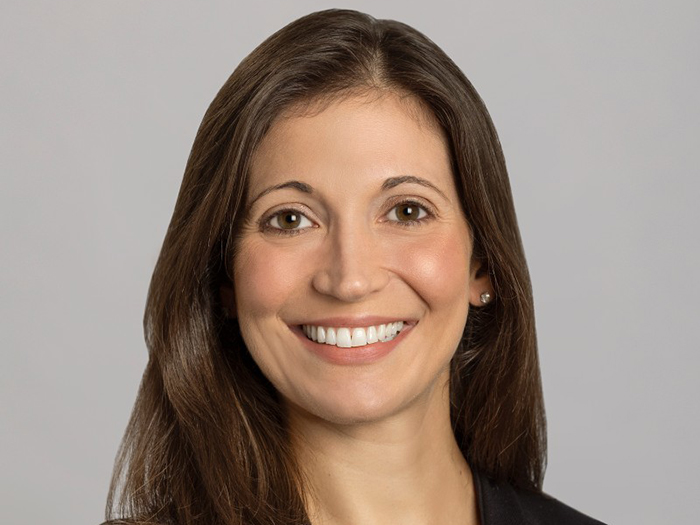Commercial Auto Losses Are Climbing: 4 Ways to Keep Them Under Control

Commercial auto losses continue to trend upward, and profitability in this line remains elusive for carriers despite regular rate increases. A CIAB survey revealed that in Q2 2018, commercial auto premiums saw the highest increases across all lines of business, rising 8.2 percent.
However, there are things that both insurers and insureds can do to minimize the damage. Angela Guitar, Head of Excess Casualty Claims at AXA XL, describes four key trends driving losses in the commercial auto sector, and four ways to mitigate them.
4 Trends Driving Commercial Auto Losses
Big losses are being driven by both increasing frequency and severity.
1. More autos mean more accidents.
For one thing, more accidents are happening simply because there are more cars on the road. According to research analyst IHS Market, the number of cars registered to American drivers in 2016 exceeded 264 million, a 2.4 percent increase from 2015. This is one reason why more costly crashes involve light passenger vehicles — insured entities which historically have not been sources of big losses.
“We started to see a steady uptick over the past five years of severe accidents which involved private passenger vehicles owned by insureds — for example, an employer with a sales force that uses their own cars, but is covered by a commercial auto policy,” Guitar said.
“In the past, the focus on pricing was concentrated on heavy commercial vehicles. Based recent trends, we began to switch gears and make sure we were properly accounting for the risks presented by private passenger fleets.”
2. Distracted driving makes crashes more common.
Increased frequency of light vehicle crashes is not just the result of more cars on the road; distracted driving is a major contributing factor. Attachment to our mobile devices and sophisticated on-board infotainment systems don’t exactly help drivers keep their eyes on the road.
Approximately 80 percent of our cases involve some type of distracted driving, whether it’s texting or talking on the phone, playing with the dashboard screen, eating or just reaching for something on the floor of the car.” – Angela Guitar, Head of Excess Casualty Claims, AXA XL
“Approximately 80 percent of our cases involve some type of distracted driving, whether it’s texting or talking on the phone, playing with the dashboard screen, eating or just reaching for something on the floor of the car,” Guitar said.
3. Traumatic injuries raise claim costs.
Claim severity is also rising thanks in part to rising medical costs and increased frequency of significant injuries like spinal and traumatic brain injuries.
“A high percentage of our claims allege a traumatic brain injury, even in low-speed accidents. Five or six years ago that was not the case,” Guitar said. “Treatment options are also getting more aggressive, including surgery. Any kind of surgery can drive up the value of a claim.”
4. Juries are awarding higher verdicts.
When claims go to court, increasingly sympathetic juries combined with the erosion of damage caps in many states have produced ever-climbing verdict amounts.
…there’s increasingly a fear that defendants will not get a fair shake if they go to trial, which can also drive up the value of settlements, further straining our ability to resolve claims fairly.
“Significant verdict awards are popping up all over the country. Even in cases where it seems clear that the insured had no liability for an accident, or the injuries aren’t catastrophic, defendants are experiencing an increase in multi-million-dollar verdicts,” Guitar said.
“Because of this, there’s increasingly a fear that defendants will not get a fair shake if they go to trial, which can also drive up the value of settlements, further straining our ability to resolve claims fairly.”
4 Ways to Minimize Losses
While factors like medical costs and generous juries are outside the control of insurers and their clients, there are still steps companies can take to reduce frequency of crashes and minimize their exposure to legal liability.
1. Implement a cell phone policy.
Guitar’s top recommendation for owners of auto fleets is creating and enforcing a strong cell phone usage policy. That could mean requiring drivers to close any open apps, turn on a “driving mode” feature that disables certain functions while on the road, or turn the phone off completely.
“It’s not enough to say ‘I wasn’t on my phone’ if you’ve been in an accident,” Guitar said. In one Texas case, plaintiff’s counsel tried to argue that the defendant must have been on his phone because he had several apps open at the time of the accident, even though there was no further proof that the driver was actively using them.
An employer cannot call or text an employee they know to be behind the wheel.
“That argument didn’t stand up in court, but it does demonstrate how creative plaintiffs are getting,” Guitar said.
A policy should also dictate that the employer cannot call or text an employee they know to be behind the wheel.
“One example involved a claim where the insured ran through a stop sign and T-boned another car. He had been answering a text at the time that came from the Call Center of his employer,” Guitar said. “The liability may be viewed as pretty clear-cut in that situation. Employers should not be distracting their own employees while they’re driving.”
2. Invest in a telematics system.
That scenario also demonstrates the importance of fleet telematics that capture exactly what was going on at the time of an accident.
“In an auto accident there’s a lot of ‘he said, she said’ type of allegations.. There’s a black box in most cars where you can access data like speed, hard turns and braking, etc. That may reveal whether there was unsafe driving behavior going on. They are definitely worth the investment,” Guitar said.
“But that’s not always enough to prove things like the force of impact and it’s not always enough to prove fault.”
3. Install cameras facing in and out.
Outward-facing dashboard cameras paint a more detailed picture of exactly how an accident happened. Inward-facing cameras definitively show whether a driver was distracted.
“More often than not, these cameras have been helpful for insureds. It takes a bit of time to get drivers comfortable with being filmed, but once they understand that the cameras are their best defense in a claim, they come around,” Guitar said.
It takes a bit of time to get drivers comfortable with being filmed, but once they understand that the cameras are their best defense in a claim, they come around.
Even when the footage shows that an insured driver is clearly at fault, that immediate information allows insurers to determine whether it makes sense to go forward with the claim or not.
“Accidents happen. That’s why we’re here. But if we know our insured is at fault, we can resolve the matter more quickly, before we incur litigation costs, and produce a good result for everybody,” Guitar said.
4. Raise awareness about the risk.
Guitar pointed to a long-haul trucking company as an example of what to do right when it comes to protecting drivers on the road.
“Vigilant managers would check on their drivers as they came in to assess whether they seemed tired, angry, or distracted in any way. They recognized that a driver’s mental state matters,” she said.
Of course, not every company has the ability to monitor drivers’ frame of mind before every trip. Nonetheless, “a little education can go a long way,” Guitar said. “More awareness needs to be raised about the problem of distracted driving overall; it’s a danger that affects everyone. Simple reminders to be safe and focused on the road can help.”










